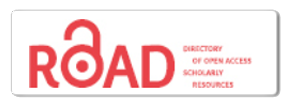STRATEGY TO INCREASE THE TAX RATIO THROUGH DIGITAL ECONOMY TAXATION: REVIEW OF LESSONS FROM ASEAN COUNTRIES
DOI:
https://doi.org/10.70248/jakpt.v2i1.1058Keywords:
Tax Increase Strategy, Digital Economy, State Tax Revenue, Tax Policy, Dynamics of the Digital EconomyAbstract
This study aims to investigate the effect of tax increase strategies on the Tax Revenue Ratio, moderated by the Digital Economy in Indonesia. The data used is panel data consisting of 60 observations over a specific period. The analysis was conducted using multiple linear regression methods and other statistical tests to examine the research hypotheses. The analysis results indicate that, although there are initially intriguing indications, there is insufficient statistical evidence to support a significant effect of the tax increase strategy on the Tax Revenue Ratio within the context of the sample studied. Similarly, the Digital Economy does not appear to have a significant influence on the Tax Revenue Ratio. Additionally, there is no significant moderating effect of the Digital Economy on the relationship between the tax increase strategy and the Tax Revenue Ratio. Nonetheless, this study's findings provide valuable insights for further understanding the dynamics between tax strategies, the digital economy, and the Tax Revenue Ratio. The policy implications of these findings underscore the need for further research and a deeper understanding of the factors influencing the Tax Revenue Ratio in Indonesia, particularly in facing the challenges and opportunities of the continuously evolving digital economy.
Keywords: Tax Increase Strategy, Digital Economy, State Tax Revenue, Tax Policy, Digital Economy Dynamics
References
Aminullah, E., Fizzanty, T., Nawawi, N., Suryanto, J., Pranata, N., Maulana, I., Ariyani, L., Wicaksono, A., Suardi, I., & Azis, N. L. L. (2022). Interactive components of digital MSMEs ecosystem for inclusive digital economy in Indonesia. Journal of the Knowledge Economy, 1–31.
Ansari, M. M. (1982). Determinants of tax ratio: a cross-country analysis. Economic and Political Weekly, 1035–1042.
Araújo Marques, J., Sousa, P., & Teixeira, G. (2020). Tax audits as a path to tax compliance in Portugal. European Journal on Criminal Policy and Research, 26, 457–479.
Atkinson, G. (1998). Statistical methods for assessing measurement error (reliability) in variables relevant to sports medicine. Sports Medicine, 26(4), 217–238. https://doi.org/10.2165/00007256-199826040-00002
Bukht, R., & Heeks, R. (2017). Defining, conceptualising and measuring the digital economy. Development Informatics Working Paper, 68.
Cabaleiro, R., Buch, E., & Vaamonde, A. (2013). Developing a method to assessing the municipal financial health. The American Review of Public Administration, 43(6), 729–751.
Chedzhemov, G. A., & Korotaeva, T. V. (n.d.). Digital Economy As A Social Phenomenon: Ethical Challenges And Perspectives Of Development. European Proceedings of Social and Behavioural Sciences.
Dahlman, C., Mealy, S., & Wermelinger, M. (2016). Harnessing the digital economy for developing countries.
Finck, M. (2018). Digital co-regulation: designing a supranational legal framework for the platform economy. European Law Review.
Haldenwang, C. von. (2010). Assessing the tax performance of developing countries.
Harris, P. (2017). Introducing bootstrap methods to investigate coefficient non-stationarity in spatial regression models. Spatial Statistics, 21, 241–261. https://doi.org/10.1016/j.spasta.2017.07.006
Hoppe, T., Schanz, D., Sturm, S., & Sureth-Sloane, C. (2023). The tax complexity index–a survey-based country measure of tax code and framework complexity. European Accounting Review, 32(2), 239–273.
Kaufmann, D., Kraay, A., & Mastruzzi, M. (2011). The worldwide governance indicators: Methodology and analytical issues1. Hague Journal on the Rule of Law, 3(2), 220–246.
Kominfo. (2022). Menko Airlangga: Ekonomi Digital di Indonesia Tertinggi di Asia Tenggara. https://www.kominfo.go.id/content/detail/41127/menko-airlangga-ekonomi-digital-di-indonesia-tertinggi-di-asia-tenggara/0/berita
Lin, B. (2022). Towards world’s low carbon development: The role of clean energy. Applied Energy, 307. https://doi.org/10.1016/j.apenergy.2021.118160
Muth, N. D. (2019). Public policies to reduce sugary drink consumption in children and adolescents. In Pediatrics (Vol. 143, Issue 4). https://doi.org/10.1542/peds.2019-0282
Raj, A. (2020). Barriers to the adoption of industry 4.0 technologies in the manufacturing sector: An inter-country comparative perspective. International Journal of Production Economics, 224. https://doi.org/10.1016/j.ijpe.2019.107546
Ries, J. D. (2009). Test-retest reliability and minimal detectable change scores for the timed “up & go” test, the six-minute walk test, and gait speed in people with Alzheimer disease. Physical Therapy, 89(6), 569–579. https://doi.org/10.2522/ptj.20080258
Rumata, V. M., & Sastrosubroto, A. S. (2020). The paradox of Indonesian digital economy development. E-Bus High Educ Intell Appl.
Scott, J. (2014). A matter of record: Documentary sources in social research. John Wiley & Sons.
Stehlik-Barry, K., & Babinec, A. J. (2017). Data analysis with IBM SPSS statistics. Packt Publishing Ltd.
Thow, A. M. (2018). Fiscal policy to improve diets and prevent noncommunicable diseases: From recommendations to action. Bulletin of the World Health Organization, 96(3), 201–210. https://doi.org/10.2471/BLT.17.195982
Viriyasitavat, W., Da Xu, L., Bi, Z., & Pungpapong, V. (2019). Blockchain and internet of things for modern business process in digital economy—the state of the art. IEEE Transactions on Computational Social Systems, 6(6), 1420–1432.
Weisberg, S. (2005). Applied linear regression (Vol. 528). John Wiley & Sons.
Downloads
Published
How to Cite
Issue
Section
License
Copyright (c) 2024 Jurnal Akuntansi, Keuangan, Perpajakan dan Tata Kelola Perusahaan

This work is licensed under a Creative Commons Attribution-NonCommercial 4.0 International License.




















